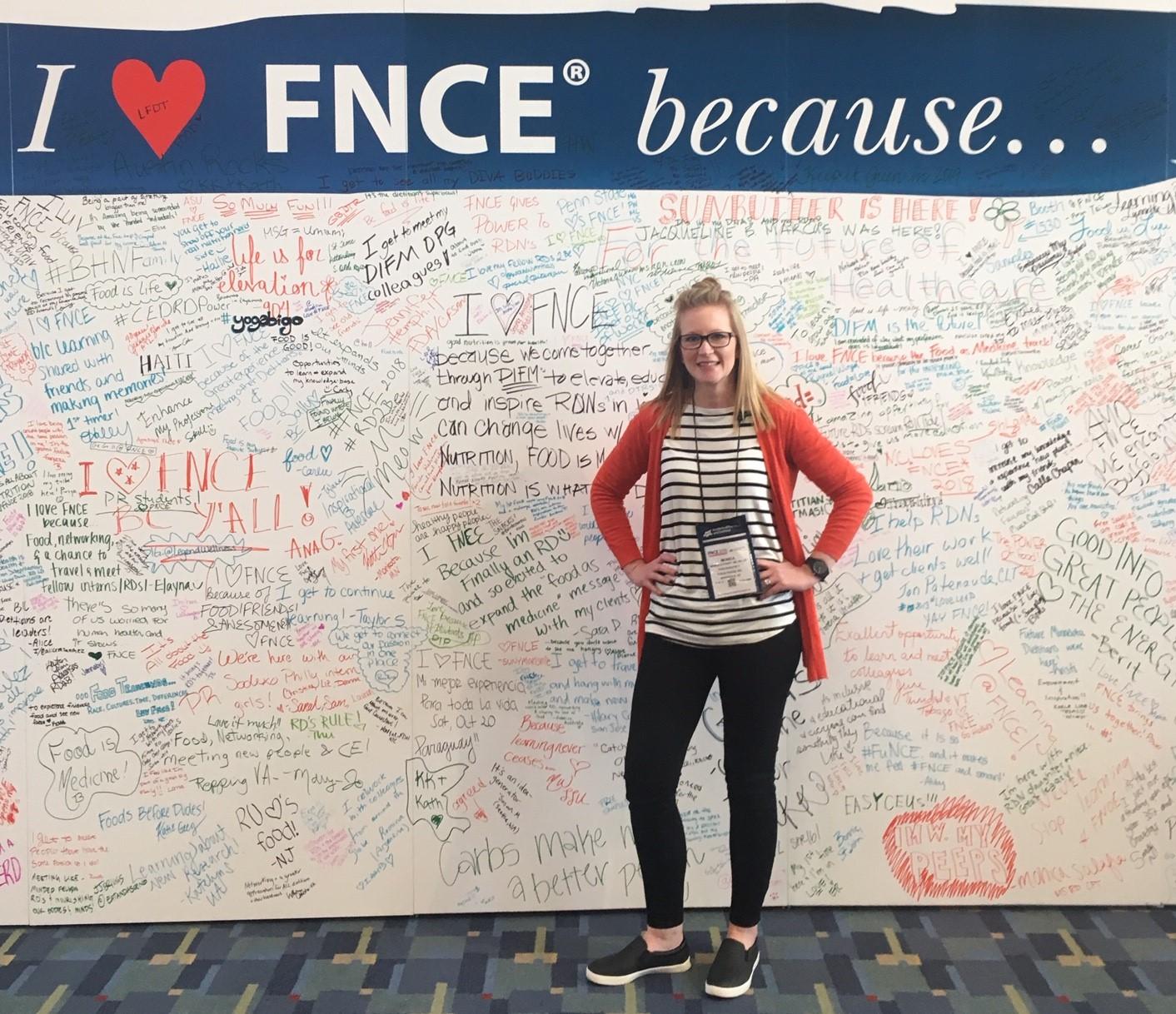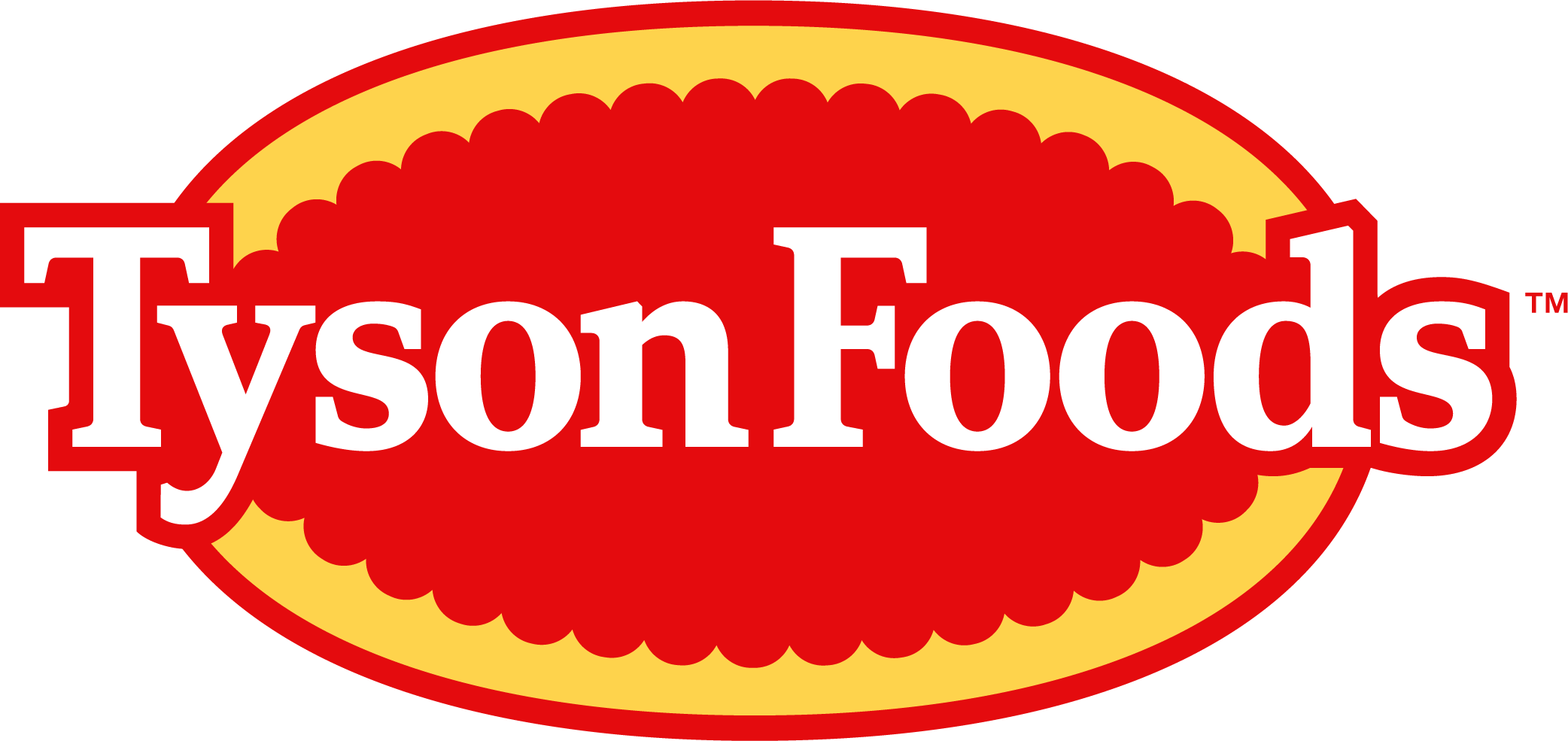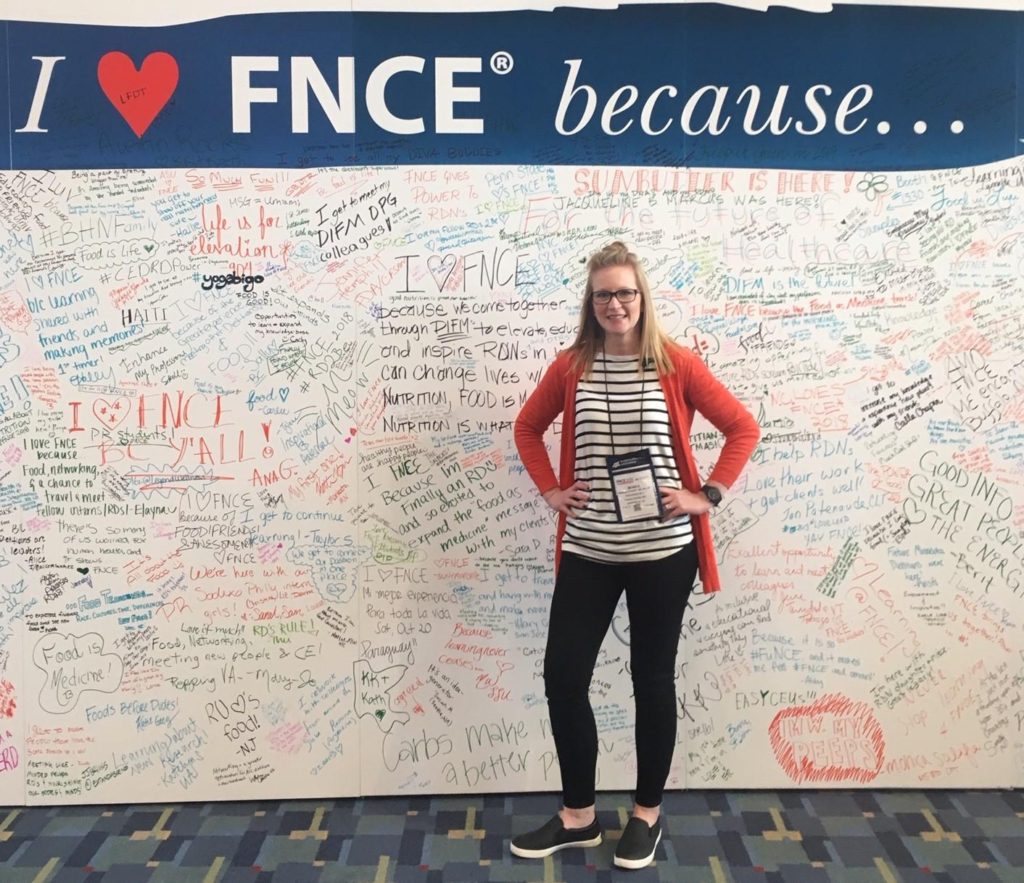
Last week, I was fortunate to attend the largest worldwide meeting for food and nutrition experts with some of my Tyson Foods Nutrition Team members in our nation’s capitol. The conference was the Food & Nutrition Conference and Expo™ (FNCE®), which gives dietitians insight into the latest nutrition research and trends, and provides continuing education required to maintain our professional credentials.
FNCE® offers a variety of topics inclusive of the evolving and expanding role of dietitians. This year, over 11,000 nutrition experts from 45 different countries attended educational sessions, research presentations, debates, tours, and culinary demonstrations in order to learn about new products in the marketplace. Every year, I leave the conference feeling re-energized and reminded why I became a dietitian in the first place—because science is fun, and food is powerful! This year was no different. I was reminded that we should all be thinking globally and acting locally, and simple daily changes, can impact our health and the health of our planet.
After four days of listening, learning, touring, and lots of walking, I am so excited to share my three FNCE® favorites with you:
The Power of Food
Have you ever thought about how powerful food is? It is unique to every culture, part of who we are, and made personal in our daily choices. Not only is food fuel for our bodies, it provides an opportunity to bring people together. As a Mom, (and a dietitian), it’s probably a given that the research presented on family meals was compelling to me. American families want to eat at home together more frequently, but several barriers exist within our current lifestyles. We’re eating alone more often, but research shows power in family meals that clearly fuels a host of benefits. Research shows associations between eating together as a family and healthier dietary outcomes, and shows that children who regularly eat dinner with their family tend to perform better in school.
If you’re looking for fun meal ideas or recipes, JOIN THE MOVEMENT HERE and try my recipe as well:
Recipe for a Family Meal
- Combine family: This can include your immediate family, work family, or a group of friends—whatever ‘family’ means to you.
- Add a dash of time: The number one barrier to family meals is varying schedules. Aim for one extra meal together per week; any meal. Try a family breakfast or a picnic lunch!
- Mix in healthy appetites: If you have little ones that can’t wait, serve a small snack or appetizer. Make sure everyone is hungry for dinner.
- Toss in your meal: Cook a family favorite (or pick it up)! Assign chores for helping…kids can help too!
- Add a spoonful of engagement: Savor your food and each other. Put your screens away! If it helps, try this house rule: the first one to peek at a screen cleans the kitchen!
Use It or Lose It
We can all agree (no matter our age) that healthy aging is important. One key component of aging is amount of muscle on board. We may take it for granted in our younger years, but as early as our 30’s, we start losing muscle. Muscle loss effects strength and balance, and research indicates protein and exercise can help us control the loss. Research on muscle health links increased dietary protein intake and increased exercise, either combined or independently, to improved muscle strength.
So, what can you do?
As Americans, our protein consumption gradually increases throughout the day. We typically eat a small breakfast, followed by a larger lunch, ending our day with a heavier dinner. This leaves opportunity at breakfast and lunch (and snacks) to increase protein intake, especially for those that skip breakfast. Balancing protein intake at meals, for example, 25-30 grams per meal, may help build muscle. Take a food first approach and focus on lean meats and poultry, eggs, legumes, and nuts as protein sources.
And don’t forget the exercise component. Both aerobic exercise that increases your heart rate (like running) and resistance exercise (like using weights to build strength) will offer increased benefits. Adults need at least 150 minutes of physical activity with two or more days of resistance exercise each week. All minutes matter; even a 10-minute walk can get you started down the right path!
Waste Not, Want Not
The message that we all must think globally, but act locally, to help protect this beautiful planet resonated with me. Some facts presented at FNCE® were astonishing. In the U.S. alone, Americans are wasting 40% of the food we produce, with a global estimate that 1 in 3 calories produced is wasted. With a rising world population in our near future, it will take 60% more food to feed our growing planet by 2050.
Food waste is an area where we can all make an impact and make food part of the solution. Think back for a second on the last “science experiment” you threw out of your refrigerator. Sometimes our good intentions of eating leftovers or buying food in bulk leads to literally tons of food being thrown away annually. The EPA offers some simple, small, but important tips for CUTTING WASTE IN YOUR OWN HOME.
Published October 29, 2018.






0 Comments
Leave A Comment